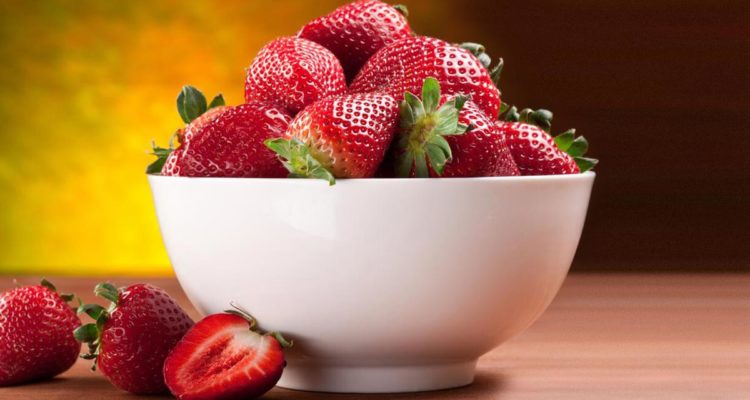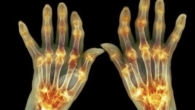
Myths about food: how useful and harmful strawberries are, how much you can eat, how to choose a tasty one
0
Many people love this berry, but not everyone knows how to choose it correctly. Yes, some prefer to buy it from grandmothers selling along the roads, believing that such strawberries are the most natural and safe, not filled with chemicals. There are many other myths. Yes, some consider it harmful for diabetes and useful for young children. Many people ignore frozen strawberries in winter, believing that nothing useful is stored in them. And someone is sure that any dessert with strawberries is as low-calorie as she herself. Finally, it is very easy to confuse strawberries with garden strawberries, while they are completely different plants.
Truth and myths about strawberries
Strawberries and strawberries garden is one and the same
Actually no. Specialists call the muscat strawberry (Fragaria moschata) a strawberry – its berries are smaller than those of a garden strawberry, as a rule, they are sweeter and, most importantly, have a characteristic aroma. Garden strawberry (Fragria ananassa, also known as pineapple strawberry) has larger fruits.
Aroma strawberries are the tastiest and ripest
As a rule, yes. An intense strawberry aroma is evidence that the berry was picked ripe. But it can also be different, more or less intense depending on the variety or weather conditions during ripening. There are varieties of strawberries that smell less pronounced.
It is safer to buy strawberries from grandmothers in street markets
Experts do not think so. The berry that is supplied by large producers and sold at retail is, by definition, safer than the one grown by “grandmothers” and sold in boxes by the roadside or on trays of spontaneous markets. Serious manufacturers carefully monitor product quality, and all retail supplies undergo mandatory quality control. At the same time, non-professionals can use prohibited drugs for plant protection, prepare fertilizer solutions by eye.
Frozen strawberries contain almost no vitamins
Myth. With rapid industrial freezing, most vitamins and other useful substances are preserved in berries. So, 100 g of frozen strawberries contain more than 40 mg of vitamin C and 17 μg of folates, which is not much less than in fresh berries. Minerals and even other useful substances are stored in it.
Strawberry is a low-calorie product
If you use it in its pure form, then yes. There are only 23 kcal in 100 g of raw strawberries. But, for example, the calorie content of strawberries with cream will be off the charts. Commercially produced smoothies and dessert with strawberries can be high in calories, and such products usually have a lot of added sugar.
Strawberries should not be eaten by diabetics
Myth. With reasonable use, strawberries will not harm and, on the contrary, will be useful. In moderate amounts, the berry is even recommended for diabetes. Thus, studies have noted the positive effect of eating strawberries on the body in type 2 diabetes. Experts at the Mayo Clinic indicate that one serving should contain 15 g of carbohydrates. In this case, the sugar contained in the berries will not affect the level of sugar in the blood. A safe amount for diabetics would be about 1.25 cups of whole strawberries.
White strawberries are less likely to cause allergies
True. Allergists note that white varieties of strawberries are usually well tolerated by people suffering from allergies and practically do not contain strawberry allergens.
Damage of strawberries
The main danger of strawberries – it often causes allergies. As experts from the London Allergy and Immunology Center explain, cross-allergy to other members of the pink family is often noted: cherries, raspberries, blackberries, peaches, apples. Often, people with an allergy to strawberries also react to birch pollen, apricots, melons, bananas, tangerines.
The reaction can be expressed in:
- symptoms of food allergy (abdominal pain and spasms, nausea and vomiting);
- atopic dermatitis;
- asthma-like reactions;
- rhinitis;
- oral allergy syndrome;
- generalized urticaria;
- itching of the skin.
- calcium – 16 mg;
- iron – 0.41 mg;
- phosphorus – 24 mg;< /li>
- potassium – 153 mg;
- magnesium – 13 mg;
- sodium – 1 mg;
- zinc – 0.14 mg;
- copper – 0.48 mg;
- manganese – 0.38 mg;
- selenium – 0.4 μg;< /li>
- fluorine – 4.4 μg;
- vitamin C – 58.8 mg;
- thiamine – 0.02 mg;
- riboflavin – 0.02 mg;
- niacin – 0.38 mg;
- pantothenic acid – 0.12 mg;
- vitamin B6 – 0.04 mg;
- folate – 24 μg;
- vitamin A – 12 IU;
- vitamin E – 0.29 mg;
- vitamin K – 2.2 μg.
- dry, without signs of decay;
- with a smooth, elastic, shiny surface;
- without dents and spots ;
- with a rich smell.
< /ul>
In isolated cases, anaphylaxis is possible.
Strawberries also contain histamine, which can cause a pseudoallergic reaction. For example, as a result of excessive production of histamine provoked by fruits, urticaria is possible.
Poorly washed strawberries contaminated with earth can cause helminthiasis. Eating dirty or carelessly washed berries often leads to infection with such infections as ascariasis, trichocephalosis, toxocarosis, strongyloidosis.
Benefits of strawberries
Strawberries contain many vitamins and useful micro- and macroelements. The berry is especially rich in vitamin C, potassium, and folates. It also contains fiber, fruit acids and a large number of phytochemicals, thanks to which it has a powerful antioxidant and anti-inflammatory effect. Among them are ellagic acid and flavonoids. “Their main function is to protect our cells from damage and prevent premature aging,” the nutritionist points out.
What vitamins and minerals are in strawberries? In 100 g of fresh berries you can find:
How many strawberries can you eat at one time without harming your health
The main thing is to know the measure. A healthy adult without food allergies and in the absence of medical contraindications to eating strawberries can safely eat 200-300 g of fresh berries per day, according to the doctor.
Optimal daily dose for those diagnosed with diabetes , should not exceed 60 g of fresh strawberries.
For children, pediatricians recommend introducing strawberries into the diet after one and a half years and gradually, carefully monitoring possible allergic reactions.
Which strawberry to choose
strong>
To choose the tastiest strawberries, you need to focus on the appearance and smell of the berries. Good ripe berries should be:
White tips of the berries are signs that the strawberries are not ripe. It is also useful to examine the leaves of the “cup” that frame the berry: in a good strawberry, they are green, with no signs of wilting.









Leave a Reply